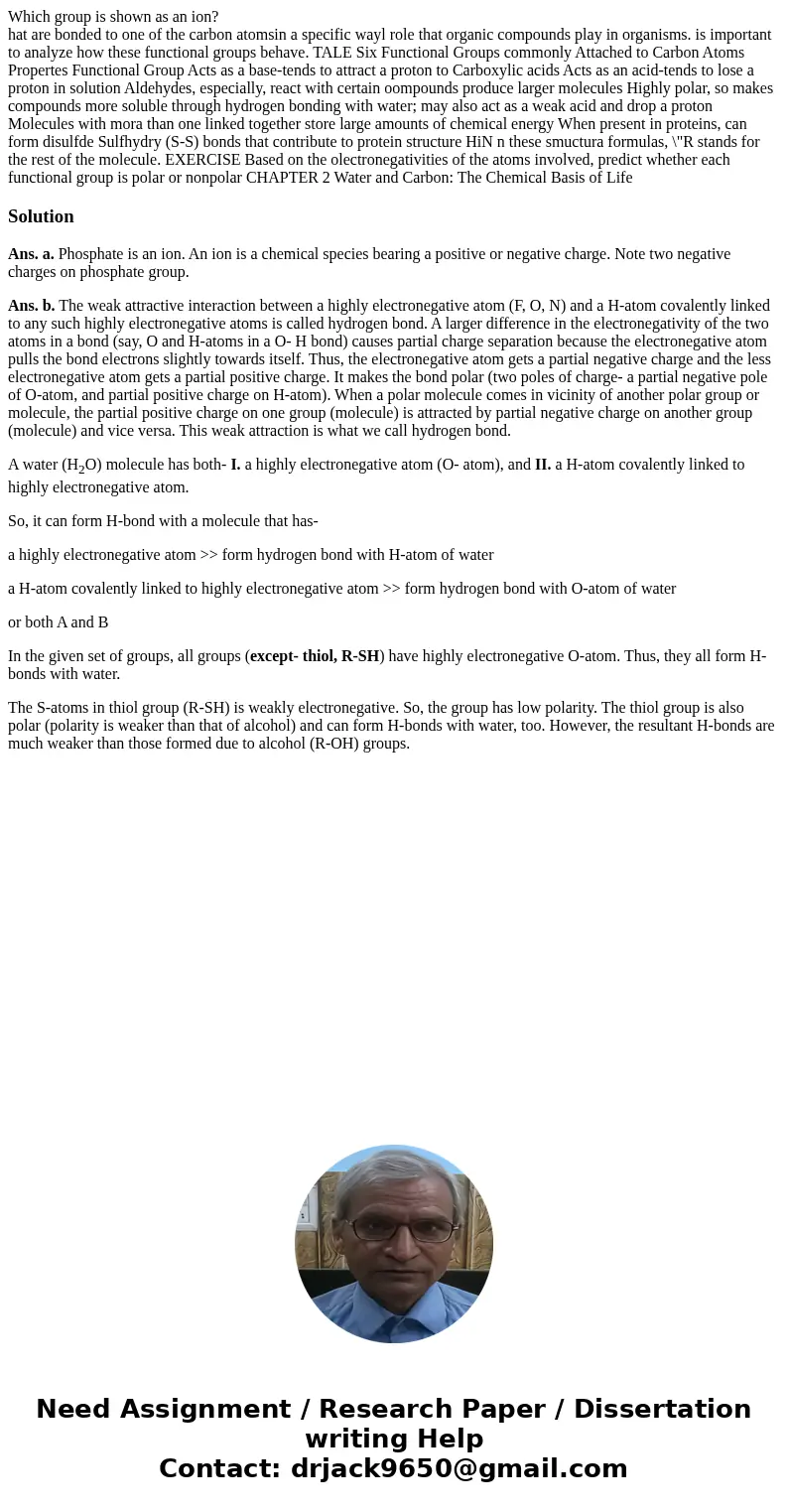Which group is shown as an ion hat are bonded to one of the
Solution
Ans. a. Phosphate is an ion. An ion is a chemical species bearing a positive or negative charge. Note two negative charges on phosphate group.
Ans. b. The weak attractive interaction between a highly electronegative atom (F, O, N) and a H-atom covalently linked to any such highly electronegative atoms is called hydrogen bond. A larger difference in the electronegativity of the two atoms in a bond (say, O and H-atoms in a O- H bond) causes partial charge separation because the electronegative atom pulls the bond electrons slightly towards itself. Thus, the electronegative atom gets a partial negative charge and the less electronegative atom gets a partial positive charge. It makes the bond polar (two poles of charge- a partial negative pole of O-atom, and partial positive charge on H-atom). When a polar molecule comes in vicinity of another polar group or molecule, the partial positive charge on one group (molecule) is attracted by partial negative charge on another group (molecule) and vice versa. This weak attraction is what we call hydrogen bond.
A water (H2O) molecule has both- I. a highly electronegative atom (O- atom), and II. a H-atom covalently linked to highly electronegative atom.
So, it can form H-bond with a molecule that has-
a highly electronegative atom >> form hydrogen bond with H-atom of water
a H-atom covalently linked to highly electronegative atom >> form hydrogen bond with O-atom of water
or both A and B
In the given set of groups, all groups (except- thiol, R-SH) have highly electronegative O-atom. Thus, they all form H-bonds with water.
The S-atoms in thiol group (R-SH) is weakly electronegative. So, the group has low polarity. The thiol group is also polar (polarity is weaker than that of alcohol) and can form H-bonds with water, too. However, the resultant H-bonds are much weaker than those formed due to alcohol (R-OH) groups.

 Homework Sourse
Homework Sourse